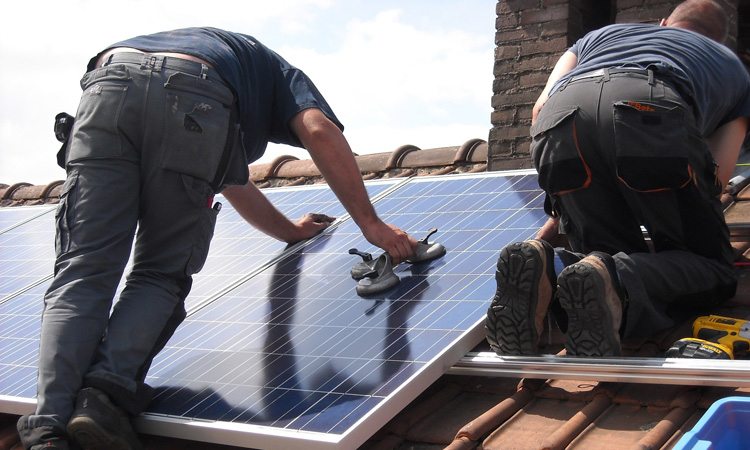Did you know that the US now has 88.9 gigawatts (GW) of total installed solar capacity? That’s enough to supply power to 16.4 million US homes! What’s more, experts forecast this to grow to a staggering 107 GW within the next five years.
The two-year extension to the 26% federal tax incentive will most likely fuel this growth. Solar PV projects that start between 2021 and 2022 can still qualify for the 26% credit.
That should be enough reason to start planning your solar panel placement. The sooner you do, the sooner you can trim or even eliminate your electricity bills.
Where exactly should you place your solar panels though? Which direction should they face so that they can harvest the most sunlight? Why does solar panel location even matter, anyway?
We’ll answer all these burning questions in this guide, so be sure to read on!
A Quick Overview of the Types of Solar Panel Systems
In the US, almost 40% of utility-scale solar plants use fixed-tilt solar PV systems. Three in four of these systems have a fixed tilt angle ranging from 20 to 30 degrees.
Many U.S. homes use fixed-tilt systems too, as these cost less than tracking systems. For starters, they come with fewer parts, as their position is permanent.
Tracking systems are those that “move” as they “follow” the sun’s movement throughout the day. Tracking systems rotate to “track” the sun using either a single- or dual-axis system. Either way, these come with more components, so they cost more to install than the fixed-tilt kind.
However, studies found that one-axis systems can boost power generation by 12% to 25%. Those figures are in comparison to south-facing fixed-tilt systems tilted to 25 degrees. By contrast, two-axis systems can generate 30% to 45% more power compared to fixed systems.
As you can see, fixed systems are those affected most by position and placement. If this is the type of system you’ll invest in, you’d want the panels to face south from the get-go.
Optimal Solar Panel Placement for Maximum Output
According to Blue Raven Solar, solar panel prices have shrunk by at least 38% in the last few years. To top it off, they’ve become better at collecting direct, indirect, and reflected light. That’s why solar PV systems can still generate power even when it’s cloudy.
However, the solar cells in a PV panel harvest more energy when direct sunlight hits them. As such, you’ll want to ensure your panels face direct sunlight to maximize their output. The more electricity they can generate, the greater your savings.
For that reason, you’ll want your solar panels to face south to produce maximum output. East- or west-facing PV panels produce about 20% less energy than south-facing ones.
With that said, solar panels can still generate electricity even if they face east or west. It’s just that they often have a lower overall annual output than if they were facing south.
Best Placement of Solar Panels Based on Roof Orientation
Fixed-tilt PV systems factor in two angles: the azimuth and the tilt. The azimuth is the direction that a tilted panel faces. The tilt is the angle that raises a solar PV panel from the ground.
If you’re going for a roof-mounted system, you need to consider your roof’s azimuth. Your roof’s pitch angle is what accounts for the tilt angle. All in all, the optimal solar panel placement angle depends on where exactly in the US you live.
For example, a study found that the optimal tilt angle for roof-mounted panels in Austin, TX, is 28 degrees. This goes up to 29 degrees for PV systems in Bakersfield, CA. In Raleigh, NC, the ideal tilt angle is 32 degrees.
What if You Don’t Have a South-Facing Roof?
Don’t worry, as east or west-facing solar panels will still help you save on energy bills. West-facing panels can even generate more power from 3 to 7 PM, the typical “peak hours.” This can benefit you if you’re paying for time-of-use electricity rates.
If your only option is to install panels on a north-facing roof, you’d need special mounting hardware. The mounts will raise the panels in the opposite direction of your roof’s slant. However, even with specialized hardware, the panels may still generate little electricity.
Does It Always Have to Be the Roof?
No. You can still go solar by investing in a ground-mounted solar PV system. You can place panels anywhere on your property that gets the most sunlight.
That makes a ground-mounted system ideal for a building with a north-facing roof. You can also install a few ground-mounted panels to boost an east- or west-facing PV system’s output.
Ground-mounted panels are also a good option if your roof can’t bear the extra weight of solar panels.
Keep in mind that a 60-cell solar panel weighs about 40 pounds on average. So if you plan to install 15 panels on your roof, your roof should be able to carry the extra 600 pounds. If your roof is old or isn’t stable enough, it’s best to install the panels on the ground.
Moreover, ground-mounted systems are easier to maintain since you can access them anytime. It’s easier to remove leaves, twigs, and other debris from these panels than on those mounted on a roof.
Another option is to install solar panels on south-facing walls. However, this side of your home’s exterior should still receive a lot of direct sunlight. This means they should be shade-free or free of obstructions (such as trees or other buildings).
Save Big With Solar Now
As you can see, proper solar panel placement and orientation will net you the biggest savings. If you have a south-facing roof, take advantage of that and install your PV panels in that area. If not, you can still save by placing a properly-tilted system on the east or west side.
Interested in more home improvement ideas and guides like this? Then please feel free to browse our other educational news and website posts!




